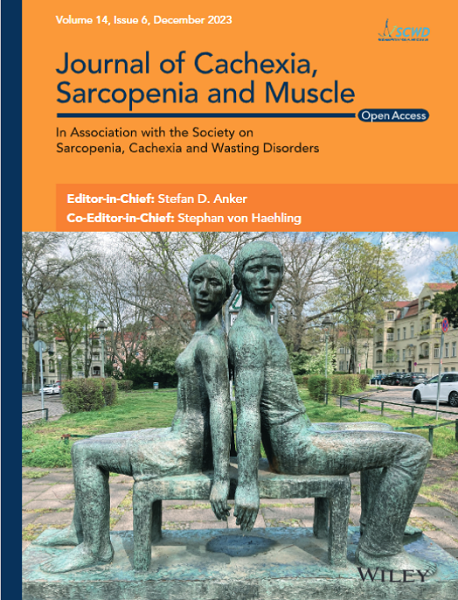Longitudinal Follow-Up of Patients With Duchenne Muscular Dystrophy Using Quantitative 23Na and 1H MRI
Abstract
Background
Quantitative muscle MRI commonly evaluates disease activity and muscle wasting in Duchenne muscular dystrophy (DMD). Disturbances in ion homeostasis contribute to DMD pathophysiology, but their relationships with disease progression is unclear. 23Na MRI may provide insights into the disease course and treatment response. This longitudinal study assessed whether sodium levels are elevated in DMD patients regardless of fat fraction (FF) and whether baseline sodium levels influence FF changes over time. Additionally, we quantified the effect of slice selection on measured sodium values.
Methods
Thirteen DMD boys (age 7.8 ± 2.4 years) underwent MRI of lower leg muscles at 3T at three visits, spaced 6 months apart. We assessed FF for disease progression and water T2, pH, apparent tissue sodium concentration (aTSC), and intracellular-weighted 23Na signal (ICwS) for disease activity. Fourteen healthy boys (age 9.5 ± 1.7 years) underwent the same MRI protocol once. Linear regression and mixed-effect modelling were used to examine sodium level increases and their impact on FF changes.
Results
In DMD, muscles with FF < 10% exhibited significantly elevated aTSC (24.8 ± 4.6 mM vs. 14.5 ± 2.1 mM in controls, p < 0.001) and higher ICwS (23.6 ± 2.5 a.u. vs. 14.1 ± 2.1 a.u., p < 0.001). At Visit 1, FF values showed a significant negative association with aTSC (β = −17.30, p = 0.016) and ICwS (β = −21.02, p < 0.001).
The first mixed-effect model, which assessed aTSC alone, showed no significant effect on FF progression but indicated a weak trend (p = 0.098). The second, more comprehensive model—incorporating also ICwS and water T2—revealed that FF changes were positively associated with aTSC (p = 0.0023) and negatively associated with ICwS and wT2 (p < 0.001 and p = 0.025, respectively), with ICwS showing a significant interaction with time (p = 0.0033).
Varying slice positioning and slice number demonstrated minimal impact on aTSC and ICwS, with low CV (2%–4%) in the mid-belly region.
Conclusions
The study demonstrates significant MRI-based changes related to dystrophic alterations in DMD. We identified early alterations in sodium homeostasis, independent of FF. Our findings suggest that the relationship between sodium levels and FF progression is complex and may not be fully explained by total sodium measurements alone. Given the small sample size, further validation in larger cohorts is needed. Combined 1H and 23Na-MRI may offer deeper insights into how metabolic and ionic changes interact with FF progression and overall disease activity.


 求助内容:
求助内容: 应助结果提醒方式:
应助结果提醒方式:


